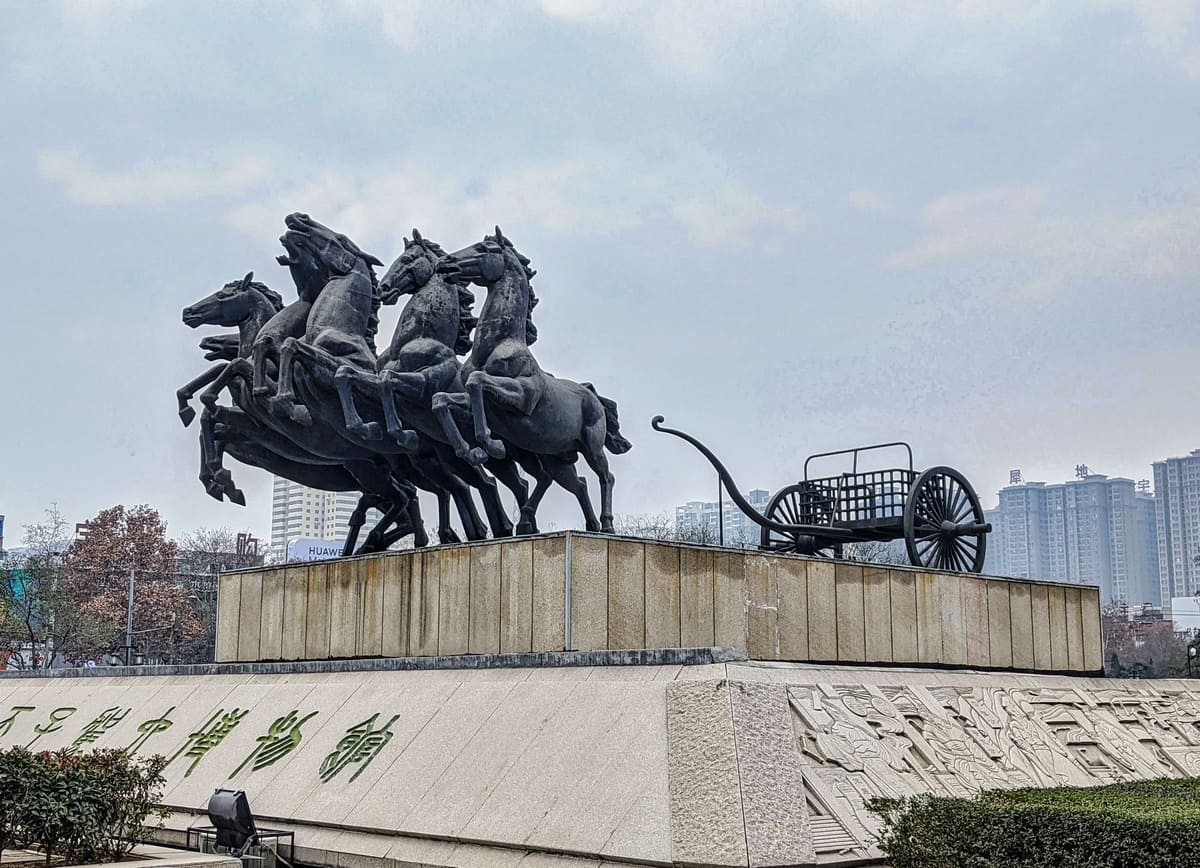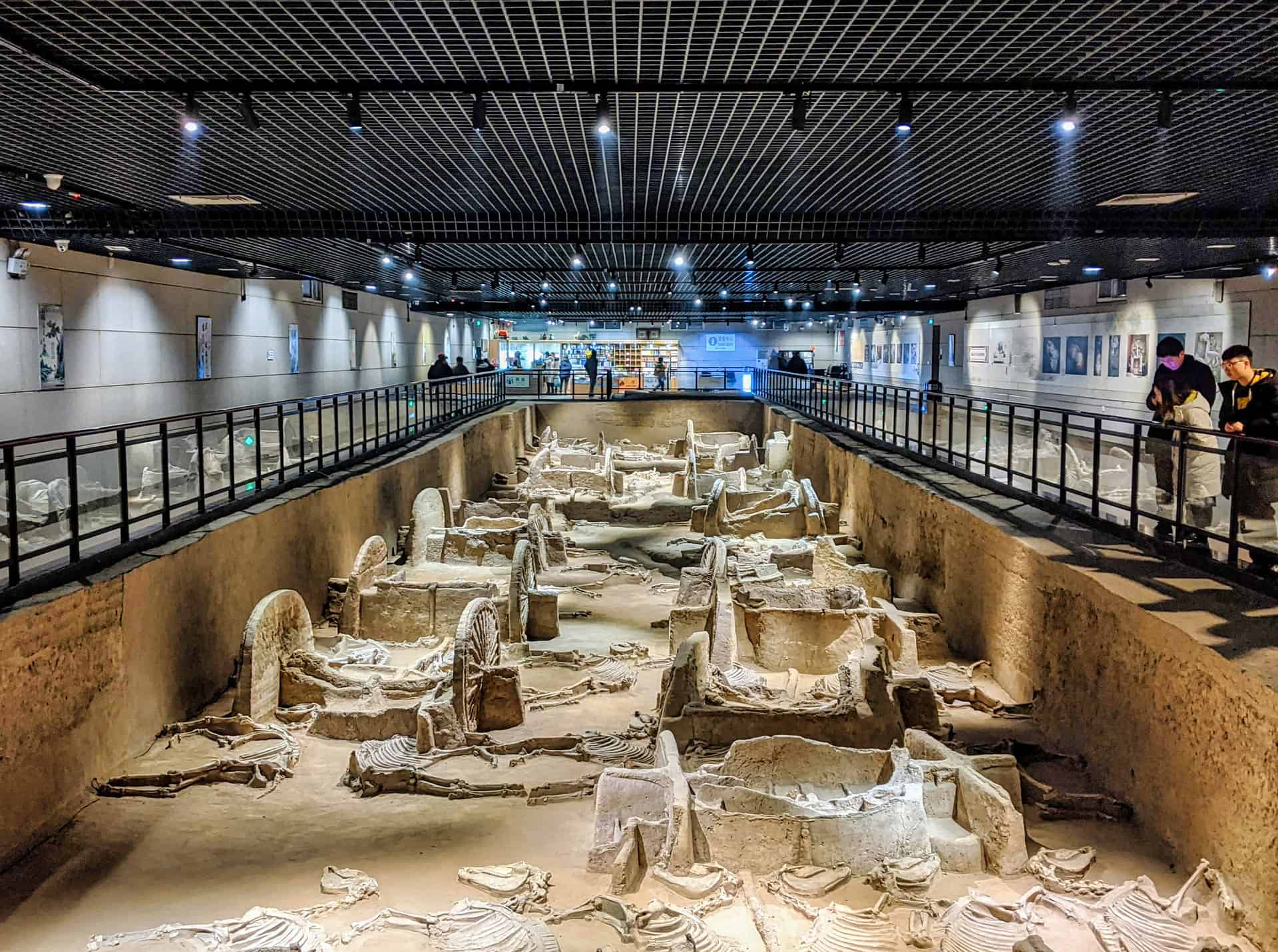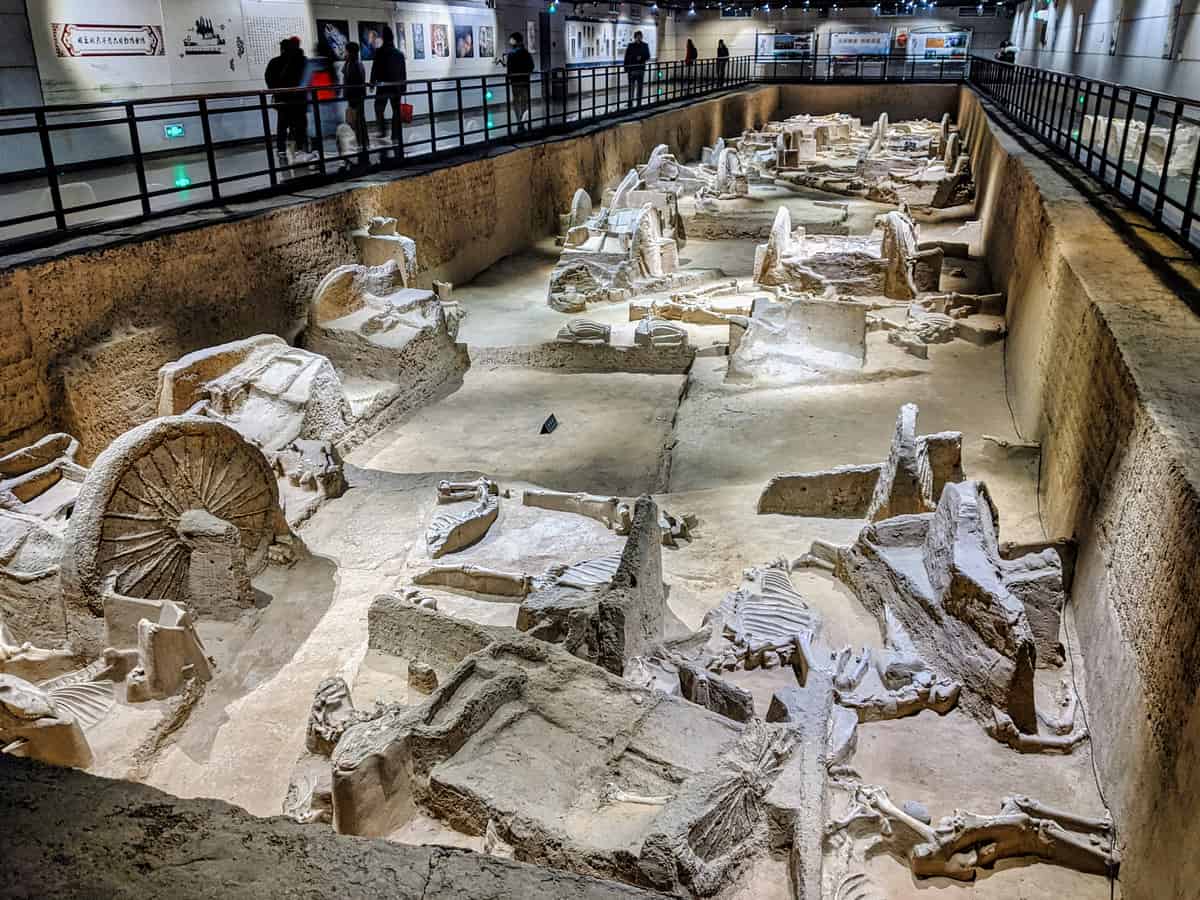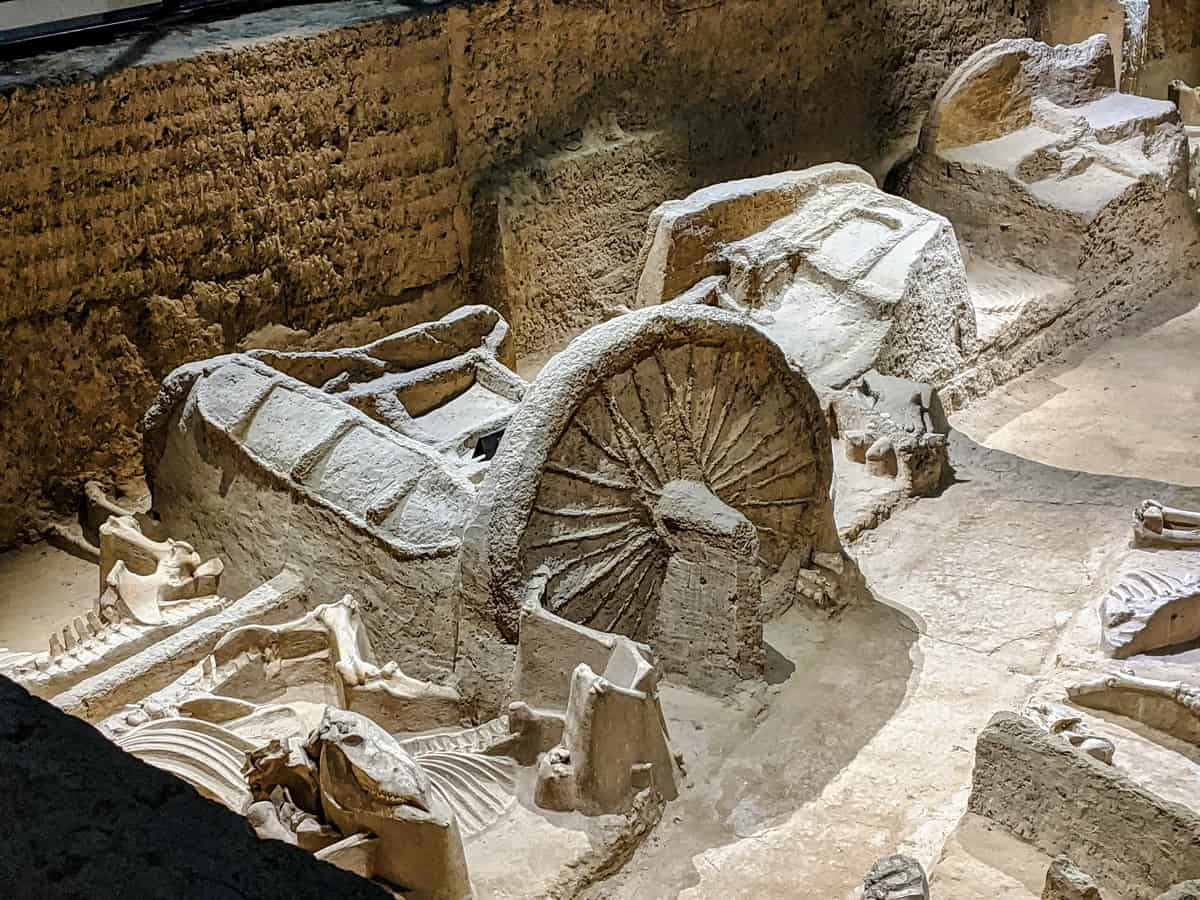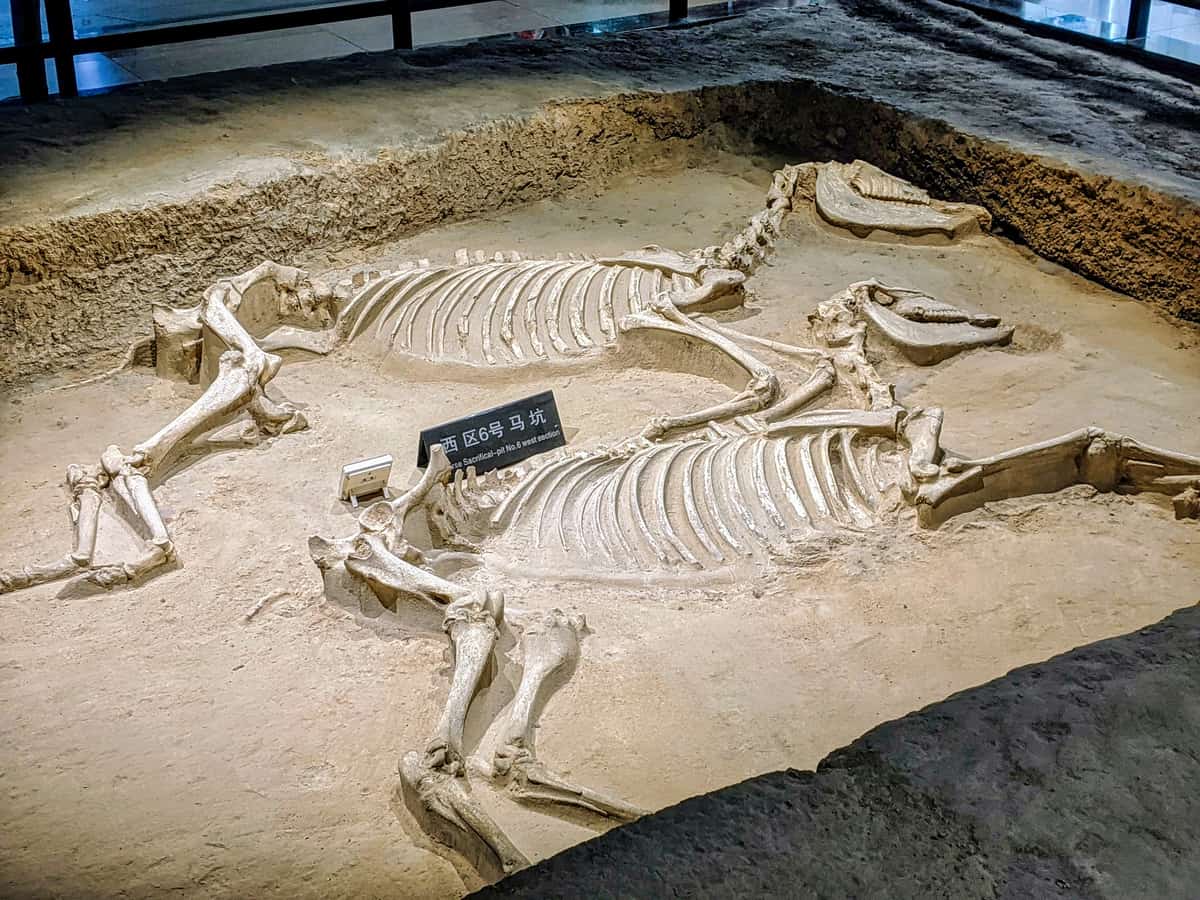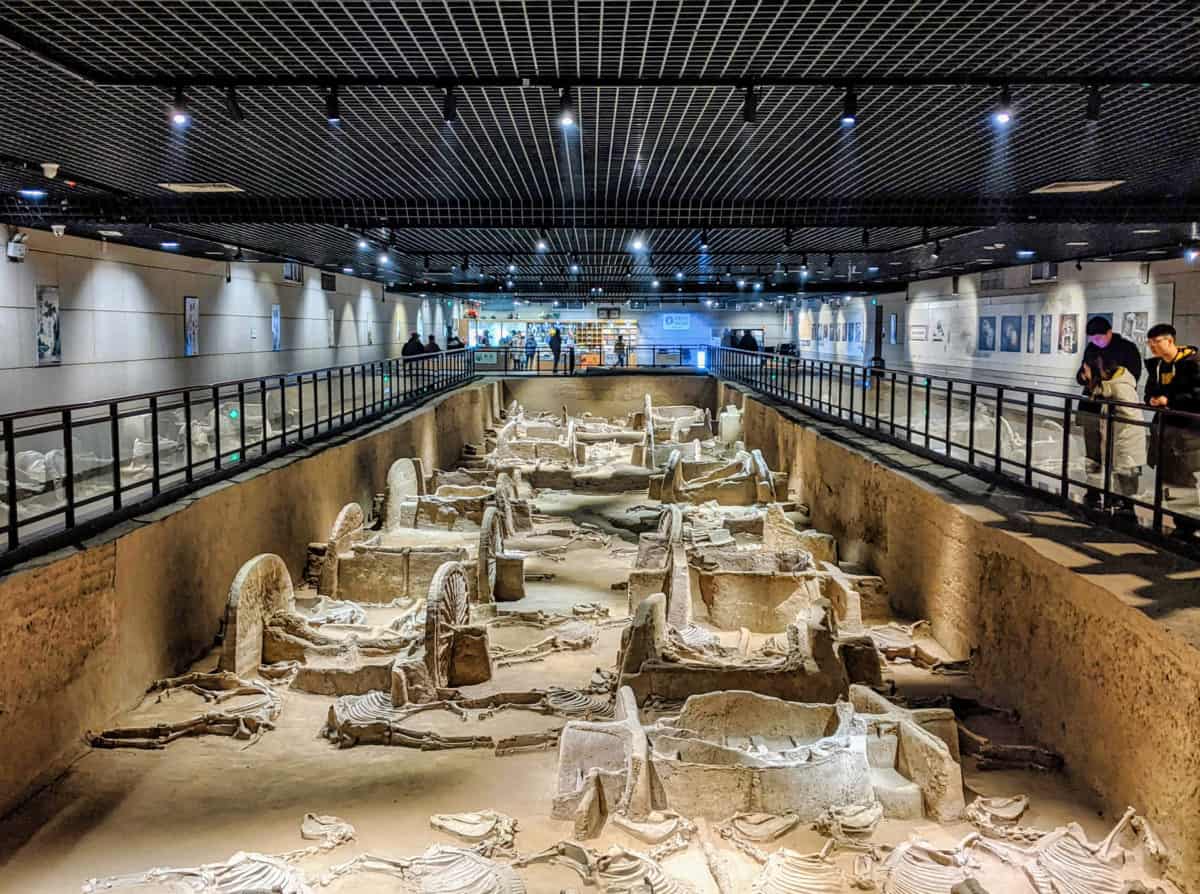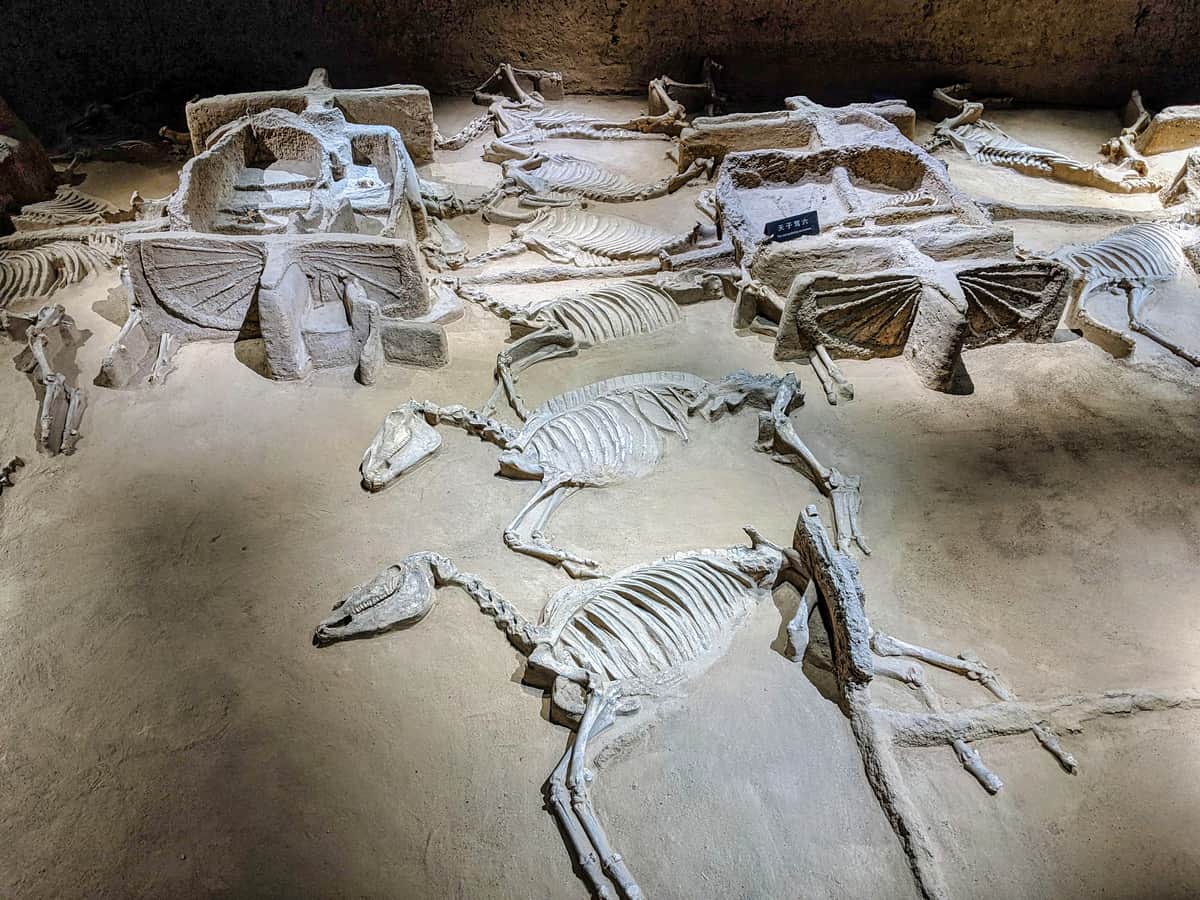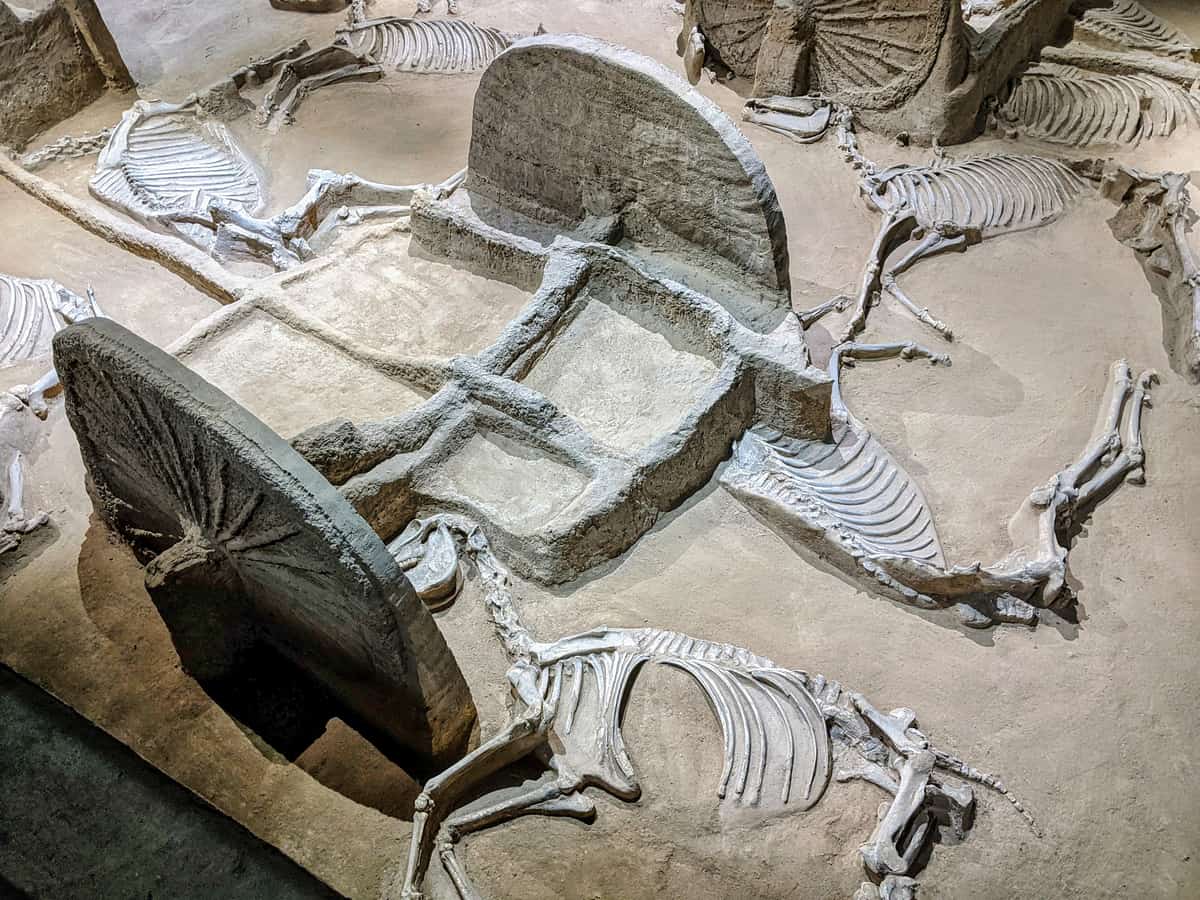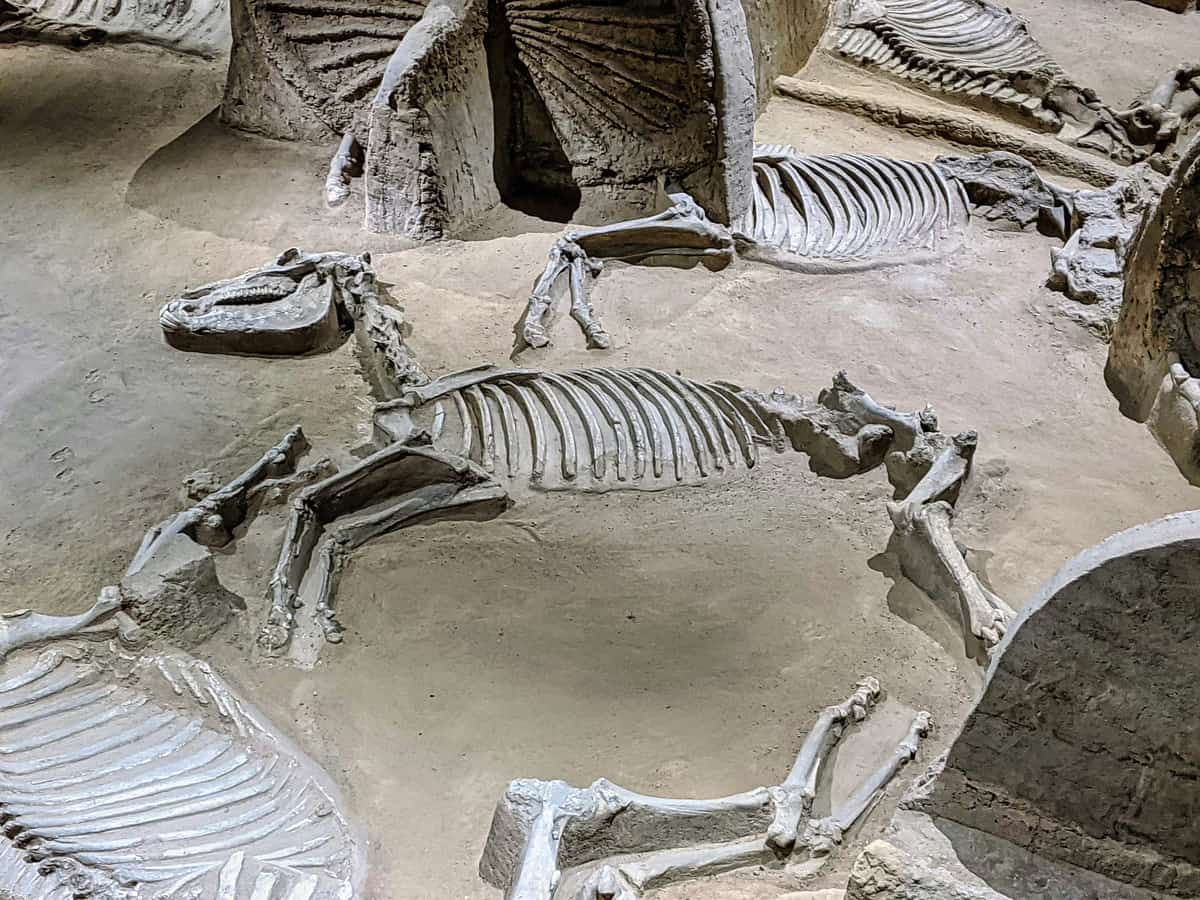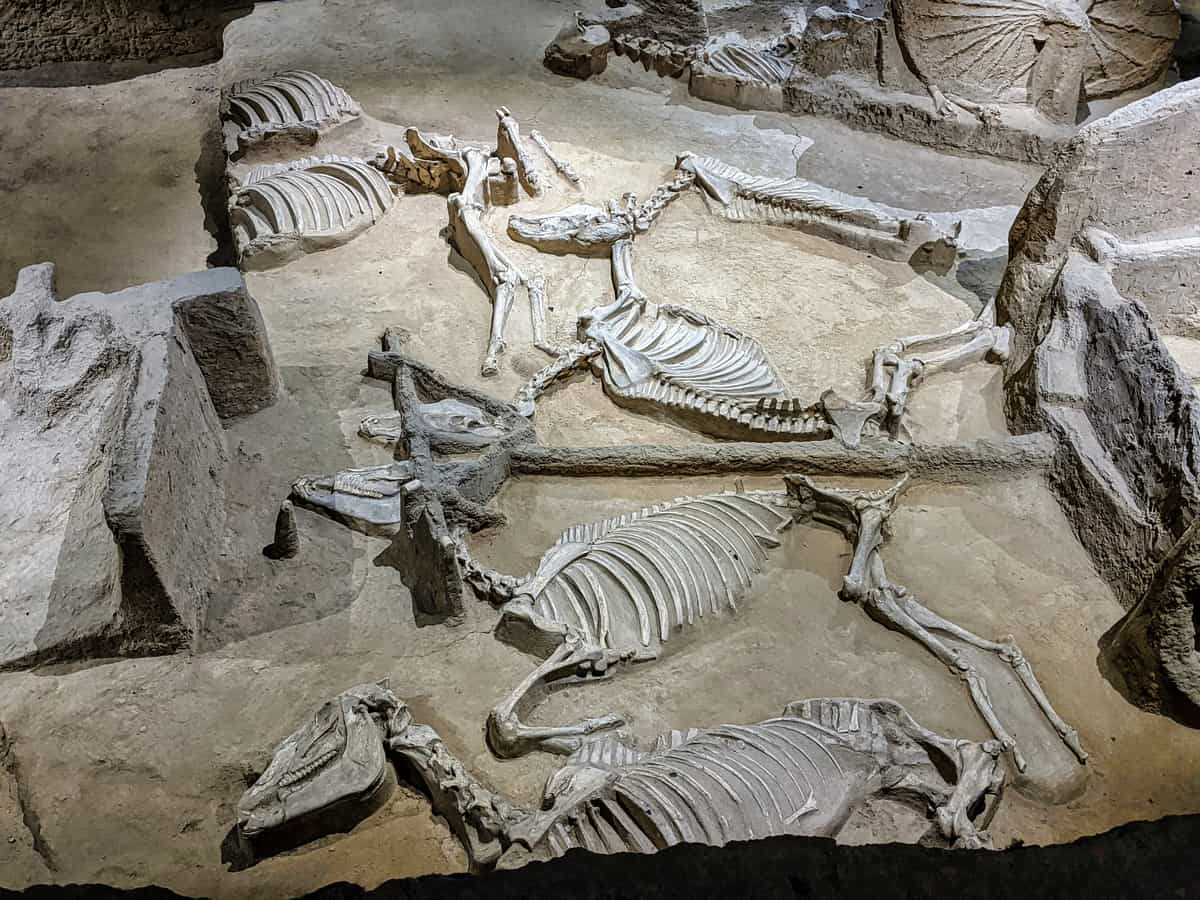China Discovery Tour
Luoyang | China
04 Jan 2020 | Sat
Day 08 of 18
Tianzi Jialiu Museum Luoyang
Before entering the underground museum of Tianzi Jialiu (Luoyang Emperor Six Horses Carriage Museum) we had no idea what to expect. What we found inside was something quite unique – an archaeological dig site displaying an emperor’s chariot/carriage with the remains of 6 horses attached to it. Our guide explained to us how the horses were sacrificed and buried together with the emperor as he passed on to the afterlife.
